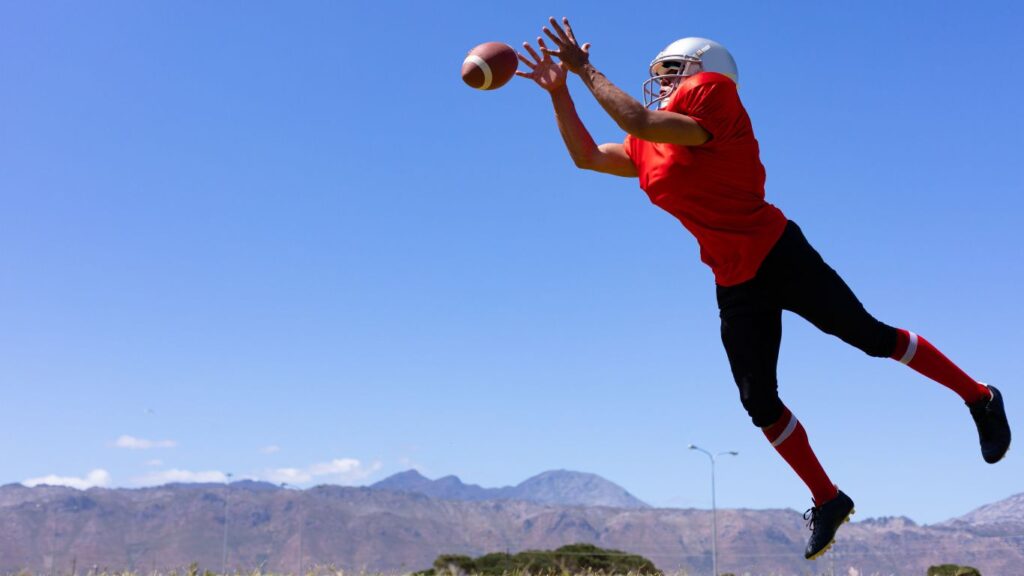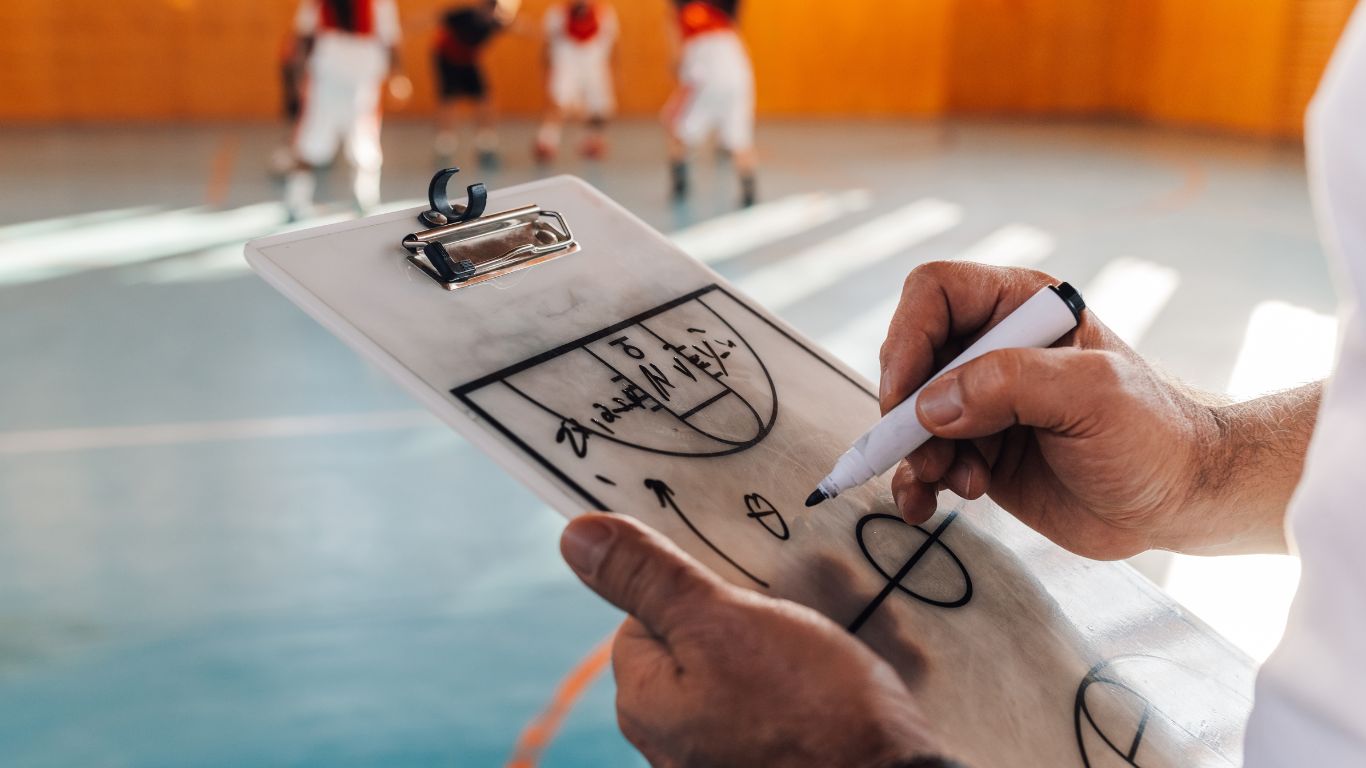When it comes to football, the tight end is a crucial player on the field who often serves as a versatile offensive weapon for their team. But what exactly does a tight end do during a game? Well, think of them as hybrid players who combine the skills of a receiver and a lineman. Tight ends are responsible for both catching passes and blocking defenders to help create running lanes for their teammates. This dual role requires a unique set of skills and physical abilities that set tight ends apart from other positions on the field.

In addition to their blocking and receiving duties, tight ends are also often called upon to run various types of pass routes, providing their quarterback with another viable target in the passing game. This makes them a valuable asset for teams looking to keep their opponents guessing on defence. By understanding the role and responsibilities of a tight end, fans can gain a deeper appreciation for the intricate strategies and teamwork that go into every play on the football field.
Definition and Role of a Tight End
In the complex world of football, there are numerous different positions that players can be assigned to. One such position is that of the tight end. If you need more clarification on what a tight end does or what their role is on the field, then keep on reading to learn more about this crucial player.
A tight end is a versatile player who lines up on the offensive side of the field. They are positioned on the line of scrimmage next to the offensive tackles but further away from the centre. This position requires a unique skill set that combines the abilities of both a wide receiver and an offensive lineman.
The role of a tight end is multifaceted. One of their primary responsibilities is to serve as both a blocker and a receiver. When it comes to blocking, the tight end must be able to block defensive players effectively in order to create openings for the running back or protect the quarterback. This requires strength, agility, and good technique to neutralize the opposing team’s defence successfully.
In addition to blocking, the tight end is also a key target for the quarterback in the passing game. They run routes to catch passes thrown by the quarterback, and their size and strength make them a valuable asset in the red zone and on third-down plays. Tight ends are often utilized as safety valves for the quarterback, providing a reliable option when other receiving options are covered. They must have good hands, route-running abilities, and the awareness to find gaps in the defence to make themselves open for passes.
Tight ends are known for their versatility on the field. They can play a variety of roles within the offence depending on the game situation. Some tight ends are used primarily as blockers, while others are more focused on receiving. There are even some tight ends who excel at both aspects of the game, making them a threat to the defence in multiple ways.
One of the reasons why tight ends are so valuable to a football team is their ability to create mismatches against the defence. Their combination of size and athleticism allows them to outmuscle smaller defensive backs and outrun slower linebackers. This makes them a difficult matchup for the defence to handle, as they can exploit weaknesses in coverage and create big plays down the field.

Overall, the role of a tight end is crucial to the success of an offence. They are relied upon to block effectively, catch passes, and create mismatches against the defence. Tight ends must be well-rounded players who can contribute in a variety of ways to help their team move the ball down the field and score points. So next time you watch a football game, pay close attention to the tight end and appreciate the vital role they play in the game.
Blocking Responsibilities
Blocking is a crucial aspect of a tight end’s role in football. While they are known for their ability to catch passes and make big plays down the field, tight ends also play a crucial role in blocking for the running back and protecting the quarterback.
When it comes to blocking, tight ends have several responsibilities on the field. One of the main things that tight ends are tasked with is run blocking. This means that they must use their size and strength to create openings for the running back to gain yards. Tight ends often line up on the line of scrimmage next to the offensive tackle, and their job is to either seal off the edge or block downfield to clear a path for the ball carrier.
In addition to run blocking, tight ends also play a critical role in pass protection. When the quarterback drops back to pass, they must have enough time to make the throw without being sacked. Tight ends help protect the quarterback by blocking incoming defenders who are rushing the passer. This requires quick footwork and blocking solid technique to make sure that the quarterback stays upright and has time to create a play.
Another important blocking responsibility for tight ends is chip blocking. This technique involves the tight end briefly engaging with a pass rusher before releasing into their route. By giving the offensive lineman a helping hand in slowing down the defender, the tight end can help keep the quarterback safe and prevent the defender from getting to him too quickly.
Furthermore, tight ends are also often utilized as lead blockers on running plays. When the offence is looking to gain tough and gritty yards on the ground, tight ends can be called upon to lead the way for the running back. By ushering the ball carrier through the hole and taking on defenders at the point of attack, tight ends play a vital role in helping the offence move the chains and sustain drives.
In addition to their on-field responsibilities, tight ends must also be able to read the defence and adjust their blocking assignments accordingly. This requires a keen understanding of the defensive schemes and the ability to react to the movements of the opposing players quickly. Tight ends must be able to identify blitzes, stunts, and other defensive tactics in order to assign defenders and keep the effective quarterback safe effectively.
Overall, blocking is a crucial component of a tight end’s role in football. Whether it’s run blocking, pass protection, chip blocking, or lead blocking, tight ends play a crucial role in helping the offence move the ball down the field and put points on the scoreboard. By using their size, strength, and technique to block for their teammates effectively, tight ends play an essential role in the success of the team.
Receiving Responsibilities
In the world of football, the tight end position is considered one of the most versatile and dynamic positions on the field. A tight end is a player who lines up on the offensive side of the ball, typically at the end of the offensive line next to the offensive tackle. Tight ends play a crucial role in both the running and passing game. Still, today, we are going to focus on their responsibilities in the passing game, specifically their receiving responsibilities.

When it comes to receiving responsibilities, tight ends are often seen as a valuable asset to the team’s passing game. They are usually tall and have good hands, making them ideal targets for quarterbacks to throw to in the passing game. Tight ends are responsible for running a variety of routes on the field, such as out routes, slant routes, post routes, and corner routes. They must be able to use their speed and agility to get open and create separation from defenders in order to be successful in catching the ball.
One of the primary roles of a tight end in the passing game is to serve as a safety valve for the quarterback. When the quarterback is under pressure or can’t find an open receiver downfield, the tight end is often the first option to check down to. Tight ends must be able to find soft spots in the defence and present themselves as an easy target for the quarterback to throw to. They must also be able to read the defence and adjust their routes accordingly to exploit any weaknesses in coverage.
In addition to being a safety valve, tight ends are also utilized as big-play threats in the passing game. Due to their size and athleticism, tight ends are often matched up against slower linebackers or smaller defensive backs, giving them a physical advantage when it comes to making catches downfield. Tight ends must be able to use their size and strength to outmuscle defenders and come down with contested catches in traffic.
Another crucial aspect of a tight end’s receiving responsibilities is their ability to block effectively in the passing game. Tight ends are often called upon to help protect the quarterback by blocking pass rushers coming off the edge. They must be able to engage with defenders and use proper blocking techniques to prevent defenders from getting to the quarterback. This not only helps keep the quarterback upright but also gives him more time to find open receivers downfield.
Overall, tight ends play a vital role in the passing game by serving as both a reliable target for the quarterback and a dynamic playmaker downfield. They must possess a unique skill set that combines speed, agility, size, and strength in order to be successful in their receiving responsibilities. Tight ends must be able to run a variety of routes, make tough catches in traffic, and be willing to block effectively in the passing game. Their versatility and athleticism make them a vital component of any successful offence in football.
Versatility on the Field
Tight ends in football are some of the most versatile players on the field. They are a unique hybrid between a wide receiver and an offensive lineman, possessing both the speed and agility to catch passes and the strength to block defenders. Their role on the field requires both physical prowess and football intelligence, making them an essential part of any successful offence.
One of the primary responsibilities of a tight end is to catch passes from the quarterback. They often line up on the end of the offensive line, giving them a clear view of the entire field. This positioning allows them to run routes downfield and make themselves available for the quarterback to throw to. Tight ends are typically taller and heavier than wide receivers, making them prime targets for passes in the red zone and third-down situations.
In addition to catching passes, tight ends are also expected to block defenders in both the running and passing game. They often help protect the quarterback by blocking defensive players who are trying to sack him. This requires a combination of strength, technique, and mental awareness to anticipate where the defender is going and how to stop them. Blocking is a crucial aspect of a tight end’s job, as it helps create running lanes for the ball carrier and gives the quarterback more time to throw the ball.
One of the reasons tight ends are so valuable to a football team is their ability to create mismatches on the field. Because of their size and speed, they can be a difficult matchup for linebackers and safeties. If a linebacker is assigned to cover a tight end, they may need help to keep up with the tight end’s speed and agility. On the other hand, if safety is assigned to cover a tight end, they may need help to match up against the tight end’s size and strength. This mismatch can create opportunities for the offence to exploit and gain significant yardage.
Another aspect of a tight end’s versatility is their ability to line up in different positions on the field. Tight ends can line up in various formations, including in the slot, out wide, or in the backfield. This flexibility allows them to be used in different ways depending on the situation. For example, a tight end lined up in the slot may be utilized as a receiving threat, while a tight end lined up in the backfield may be used as a blocker in a running play. This versatility makes tight ends a vital part of an offence, as they can adapt to different game situations and contribute in various ways.
Overall, tight ends in football play a multifaceted role on the field. They are responsible for catching passes, blocking defenders, creating mismatches, and lining up in different formations. Their versatility makes them a vital component of any successful offence and highlights the importance of having a skilled and capable tight end on the team. So, the next time you watch a football game, pay close attention to the tight end and appreciate the many ways they contribute to the game.
Importance in Offensive Strategy
In football, the tight end plays a crucial role in a team’s offensive strategy. So, what exactly does a tight end do on the field? Let’s dive into the importance of this position in football games and how it impacts a team’s overall offensive strategy.
First and foremost, the tight end is a versatile player who must be skilled in both blocking and receiving. This duality is what makes the tight end position so crucial to a team’s offensive game plan. When it comes to blocking, the tight end is responsible for helping create running lanes for the ball carrier and protecting the quarterback from oncoming defenders. With solid blocking from the tight end, the offence would be able to move the ball down the field effectively.
In addition to blocking, the tight end is also a key target in the passing game. Tight ends are typically more significant and more physical than wide receivers, making them a valuable asset in the red zone and third-down situations. Their size and athleticism make them difficult for defenders to cover, and they can often serve as a safety valve for the quarterback when under pressure. An excellent tight end can make tough catches in traffic and pick up crucial first downs for their team.
Another critical aspect of the tight end position is its ability to create mismatches on the field. Tight ends are often matched up against linebackers or safeties who may not have the size or speed to cover them effectively. The offence can exploit this mismatch to gain an advantage and move the ball down the field. By utilizing the tight end in creative ways, offensive coordinators can keep defences on their toes and open up other opportunities for their playmakers.
Furthermore, the presence of a talented tight end on the field can draw attention away from other offensive weapons, creating more opportunities for the rest of the team. Defences must account for the tight end in their game plan, which can create openings for wide receivers, running backs, and even other tight ends to make plays. This helps to keep the defence off balance and allows the offence to dictate the tempo of the game.
In today’s NFL, the tight end position has evolved to become even more crucial to a team’s offensive success. Many teams are now utilizing “move” tight ends who are more like oversized wide receivers, capable of stretching the field and creating big plays downfield. These athletic tight ends provide a new dimension to the offence and force defences to adjust their game plan accordingly.
In conclusion, the tight end is a vital piece of any football team’s offensive strategy. Their ability to block, catch passes, create mismatches, and draw attention from the defence makes them a valuable asset on the field. A talented tight end can be a difference-maker in a game, providing their team with the necessary tools to move the ball effectively and put points on the board. So next time you’re watching a football game, keep an eye on the tight end and appreciate the vital role they play in a team’s offensive success.
Frequently Asked Questions
1. What is a tight end in football?
A tight end is a player in American football who lines up on the offensive end of the line, typically next to the offensive tackle. Tight ends are often used as both blockers and receivers, making them versatile players in the game.
2. What are the responsibilities of a tight end?
Tight ends have a dual role in the game. They are responsible for blocking defenders to protect the quarterback or create openings for running plays. Additionally, tight ends are also used as receiving targets for passes from the quarterback.
3. Can a tight end catch passes in football?
Yes, tight ends are an integral part of the passing game in football. They are often targeted by the quarterback for short to medium-range passes, as well as being used in red zone situations to catch touchdown passes.
4. How does a tight end differ from a wide receiver?
While both positions are used as receiving targets in football, tight ends are typically bigger and stronger than wide receivers. Tight ends also line up closer to the offensive line and are more involved in blocking than wide receivers.
5. Are tight ends allowed to run the ball in football?
Tight ends are not typically used as ball carriers in football. Instead, they are used mainly as blockers or receiving targets for passes. However, there have been instances where tight ends are used in trick plays to run the ball, but this is rare.
6. How does a tight end score points in football?
Tight ends can score points in football by catching touchdown passes from the quarterback. A touchdown is worth six points in football, and if a tight end catches a touchdown pass in the end zone, they contribute to their team’s scoring.
7. Do tight ends have to be fast in football?
While speed can be an asset for a tight end, it is not always a requirement. Tight ends are often valued for their size, strength, and ability to block effectively. However, having good speed can help a tight end create separation from defenders when running routes and catching passes.
8. Can a tight end play defence in football?
While it is rare for a tight end to transition to a defensive position, it is not unheard of. Some players have switched from tight end to defensive end or linebacker in their football careers. However, tight ends are typically valued for their offensive skills and are not commonly used on the defensive side of the ball.
9. How important is a tight end in football?
Tight ends play a crucial role in the offence of a football team. They provide versatility by being able to block defenders and catch passes, making them valuable assets to have on the field. A skilled tight end can create mismatches for the defence and help move the ball down the field effectively.
10. What skills are needed to excel as a tight end in football?
To excel as a tight end in football, players need a combination of physical attributes and football IQ. This includes the strength to block defenders, hands to catch passes, route-running ability, and the ability to read defences. Tight ends also need to be agile and have good footwork to create separation from defenders and make plays on the field.
Conclusion
The tight end plays a crucial role in football by contributing to both the offensive and defensive aspects of the game. This versatile player is responsible for catching passes, blocking defenders, and creating scoring opportunities for the team. With their unique combination of size, strength, and agility, tight ends play a crucial role in the success of any football team. So next time you watch a game, keep an eye on the tight end and appreciate all the hard work they do on the field.








